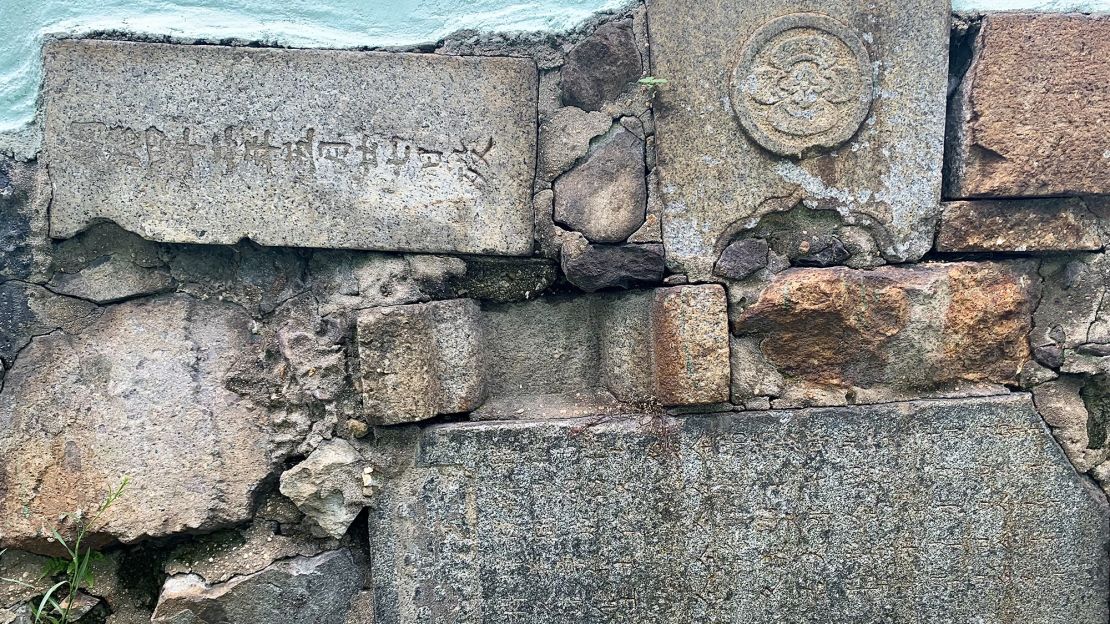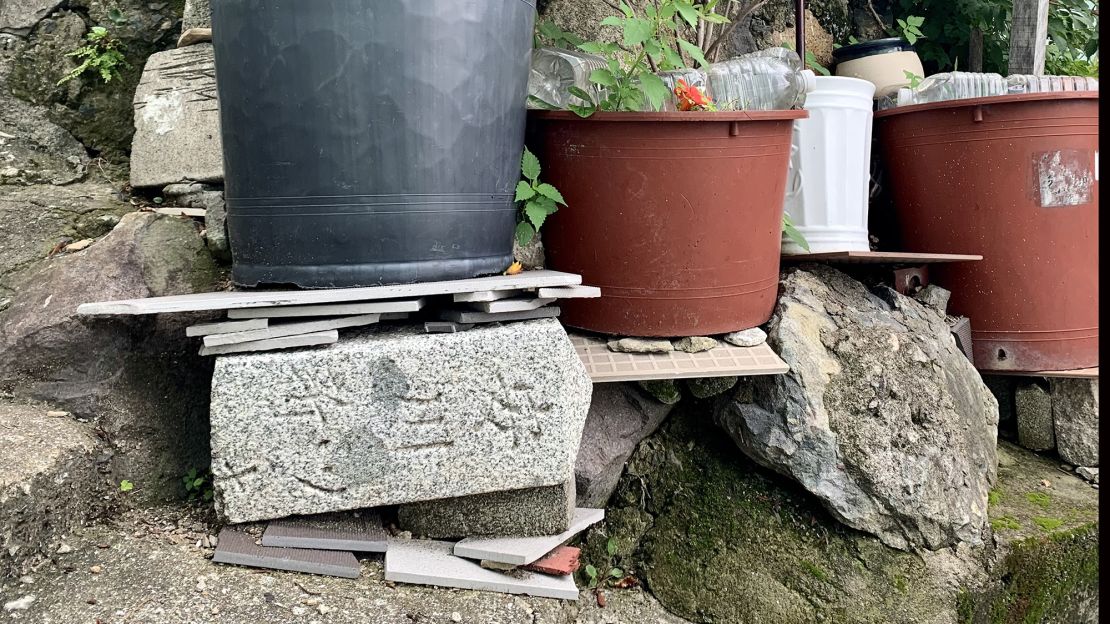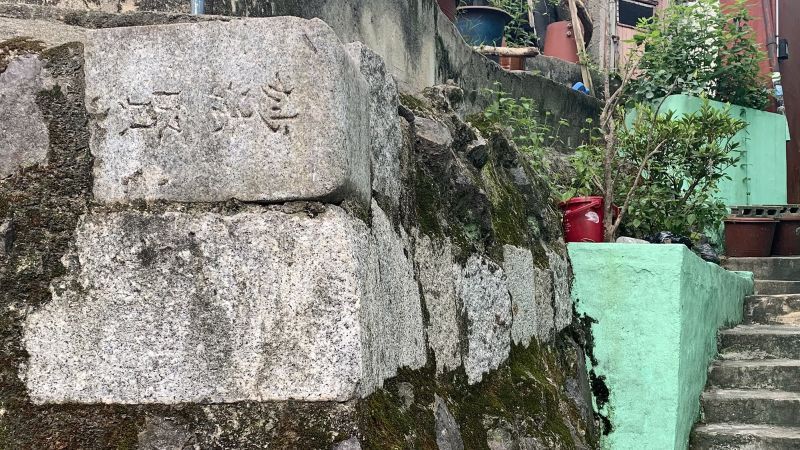Editor's note: Monthly Ticket is a CNN travel series that highlights some of the most fascinating topics in the world of travel. In October, we shifted our focus to the offbeat, highlighting everything from (supposedly) haunted spaces to abandoned places.
Busan, South Korea
cnn
—
At first glance, Ami-dong looks like an ordinary village within the South Korean city of Busan, with colorful houses and narrow alleys facing towering mountains.
But if you look closer, visitors can spot an unusual building material embedded in the houses' foundations, walls, and steep stairs: tombstones inscribed with Japanese characters.
Ami-dong, also called Tombstone Cultural Village, was built during the depths of the Korean War, which broke out in 1950 after North Korea invaded the South.
The conflict displaced large numbers of people across the Korean Peninsula, including more than 640,000 North Koreans who crossed the 38th parallel that divides the two countries. according to some estimates.
Inside South Korea, many citizens also fled to the south of the country, away from Seoul and the front lines.
Many of these refugees headed to Busan, on the southeastern coast of South Korea, one of only two cities that were never captured by North Korea during the war; the other was Daegu, located 88 kilometers (55 miles) away..
Busan became a temporary wartime capital, and UN forces built a perimeter around the city. Its relative safety – and its reputation as a rare stronghold against the North's army – turned Busan into a “huge refugee city and the last bastion of national power,” according to the city's official website.
But the newcomers faced a problem: finding a place to live. Space and resources were scarce and Busan was stretched to capacity to accommodate the influx.
Some found the answer at Ami-dong, a crematorium and cemetery located at the foot of the Busan mountains., built during the Japanese occupation of Korea from 1910 to 1945. That period of colonial rule (and Japan's use of sex slaves in wartime brothels) is one of the main historical factors behind the bitter relationship between the two countries to this day.
During that colonial period, Busan's habitable plains and downtown areas next to seaports were developed as Japanese territory, according to an article in the city government's official visitor guide. Meanwhile, the poorest workers settled inland, in the mountains, where the Ami-dong cemetery once housed the ashes of the Japanese dead.
The tombstones bore the names, birthdays and dates of death of the deceased, engraved in kanji, hiragana, katakana and other forms of Japanese writing, according to a 2008 article by Kim Jung-ha of Korea Maritime University.
But the cemetery area was abandoned after the Japanese occupation ended, according to the city's visitor guide, and when refugees arrived en masse after the start of the Korean War, those graves were dismantled and used to build a dense collection of shacks, eventually creating a small “village” within what would become a sprawling metropolis.

“In an urgent situation, when there was no land, there was a cemetery and people seemed to have felt they had to live there,” said Kong Yoon-kyung, a professor of urban engineering at Pusan National University.
The former refugees interviewed in Kim's 2008 article (many of them elderly at the time, recalling their childhood memories in Ami-dong) described tearing down the cemetery walls and removing tombstones for use in construction, to often shedding ashes in the process. According to Kim, the area became a center of community and survival, as refugees attempted to support their families by selling goods and services in Busan markets.
“Ami-dong was the boundary between life and death for the Japanese, the boundary between rural and urban areas for immigrants, and the boundary between hometown and a foreign place for refugees,” he wrote in the newspaper.
An armistice signed on July 27, 1953, stopped the conflict between the two Koreas, but the war never officially ended because there was no peace treaty. Many of the refugees in Busan subsequently left to resettle elsewhere, but others stayed, and the city became a center of economic revival.
Busan looks very different today, as a thriving seaside holiday destination. In Ami-dong, many houses have been restored over the years, some with new coats of teal and light green paint.
But remnants of the past remain.
As you walk through the village, you can see tombstones hidden under doors and stairs, and in the corners of stone walls. On the outside of some houses, they are used to prop up gas cylinders and flower pots. Although some still have clear inscriptions, others have been worn away by time and the text is no longer legible.

And the complex history of the town (at the same time a symbol of colonization, war and migration) also appears in the imagination. Over the years, residents have reported sightings of what they believed were ghosts of deceased Japanese, describing figures dressed in kimonos appearing and disappearing, Kim wrote.
He added that folklore reflects the popular belief that the souls of the dead are linked to the preservation of their ashes or remains, which had been disturbed in the town.
The Busan government has made efforts to preserve this part of its history, and Ami-dong is now a tourist attraction alongside the famous Gamcheon Cultural Village, accessible by both bus and private vehicle.
An information center at the entrance to Ami-dong offers a brief introduction, as well as a map of where to find the most notable tombstone sites. Some walls are painted with images of tombstones in a nod to the town's roots, although several signs also ask visitors to remain silent and respectful, given the number of residents still living in the area.
As you leave town, a sign on the main road says: “There is a plan to build a memorial site in the future after collecting the tombstones scattered all over the place.”












